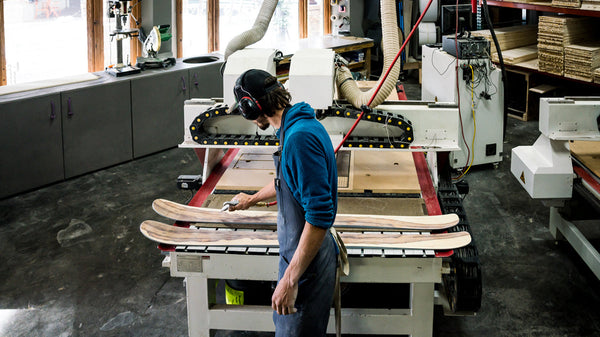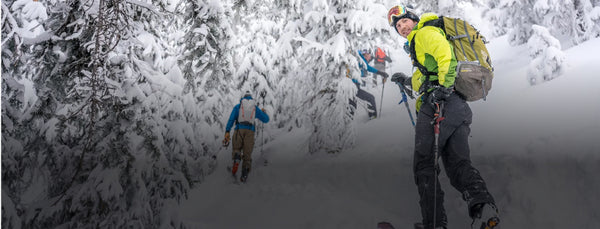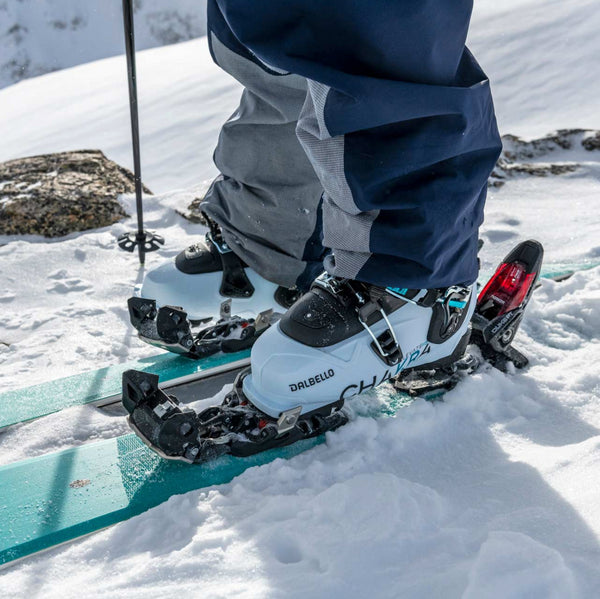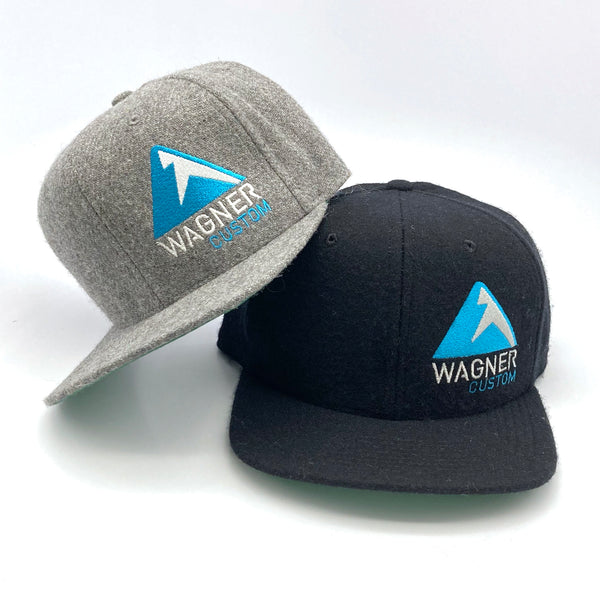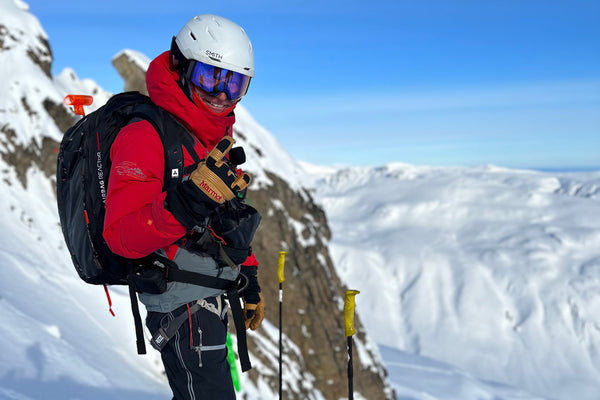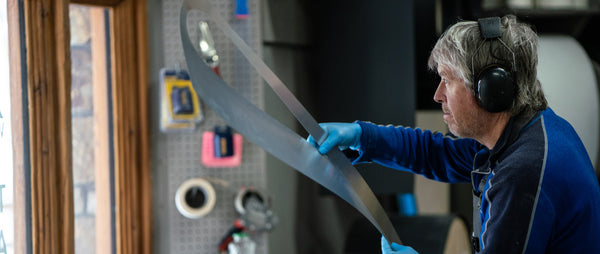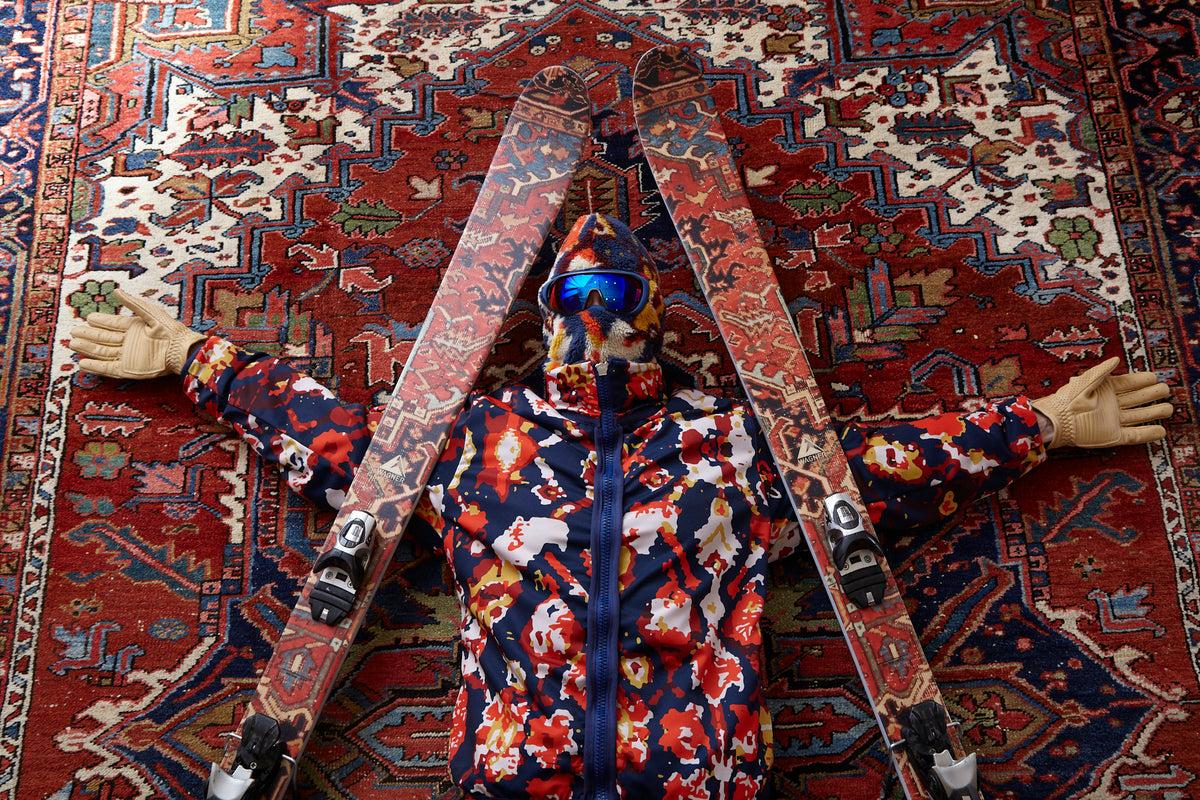
Artist Series 2024 | Mikael "King" Kennedy
At first glance, Mikael Kennedy’s professional trajectory seems so impossible—from punk-rock vagabond to Polaroid photo phenom to fashion photographer to rug dealer and now to topsheet artist—it’s hard not to reel at how he’s turned the most improbable ideas into incredible successes.
But when you get to know him enough to learn his ethos, “always be true to yourself,” it somehow all makes sense.

Mikael "King" Kennedy atop a camel in the desert.
When he was 19, inspired by his freight train-hopping older brother, Kennedy hit the road and spent a decade living out of his car (when he had one) and on friends’ floors and couches (when he didn’t), and earned just enough to live working as a garbage man, dishwasher, construction worker, or house painter. That whole time, he documented his travels with a Polaroid camera he bought in a thrift store, a collection that would become the critically acclaimed blog and zine series “Passport to Trespass”; land him features in The New Yorker, GQ, Esquire, and Newsweek; and hang in the Peter Hay Halpert Fine Art Gallery in New York City.
When Kennedy exploded onto the New York art scene, several fashion brands approached him and launched his career in the fashion photography world, where he shot for J Crew, Levis, and Vogue, among others. Along the way, Kennedy started collecting antique rugs and selling them out of his old Mercedes, which is, of course, upholstered in said rugs. What began as a hobby eventually became King Kennedy Rugs, selling one-of-a-kind rugs as well as handbags, shoes, and clothing made from his collection. Now, being fascinated by the idea of combining rugs with outdoor gear, he’s collaborated with Wagner Custom to put his rug designs on topsheets.
"Heriz" and the rug that inspired the design.
We caught up with him recently at his home in Los Angeles to ask him more about it, and here’s what he had to say.
Wagner: How did this collaboration with Wagner come about?
Kennedy: Everything I do with the rugs is kind of an experiment. When we’re making pieces out of rugs, sometimes we don’t know if it’s going to work, and when [Wagner] came to me about it, it was so far technically out of my ability to comprehend that I was, like, ‘We have to do this, and do it with a company that has skis that are also totally unique.’ Everything I sell in my gallery and in my shop is one of a kind; there’s something amazing about having these things that artist hands have touched.
Wagner: Skis and rugs is a super unique combination.
Kennedy: One of my first rugs was a threadbare prayer rug that was so well-used, it had hand and knee marks. So, physically, a ski is so wildly different than a rug, but to still have it be a piece of folk art—something that was crafted with someone’s hands—is a beautiful part of it. I have a belief that you should surround yourself with art all times. Even your car should be a version of art—I’ve been hand sewing the seats of my old Mercedes. And to take a piece of folk art and imprint it on a ski, that can be an interesting blend of new world and old world. I am still desperately trying to find someone to make a Gore-Tex jacket with my rugs on the inside. It would be insane.
"Caucasian" by King Kennedy
Wagner: What is it about rugs that fascinates you?
Kennedy: Every rug is a map of humanity, with symbols brought from other cultures and brought together; something from the Caucasus Mountain region ends up in someone’s home in Chicago that has the wear and tear of someone walking on it. It’s a magical representation of the journey of humanity. Art has that way of connecting communities and cultures in a way that other things don’t.
One of the most magical things about rug-dealing is that it’s all stories. So when I first started this 16 years ago in New York, I knew nothing. I befriended these old third- and fourth-generation rug dealers and asked them what symbols in the rugs mean. Then I picked up this rug with Arabic script, and a woman in Iran started messaging me. It turned out it was a rare rug with biblical verses about caring for your neighbor and feeding the needy. She was so touched by it. In Western cultures, we’ve seen these rugs everywhere, but no one really knows the stories of them and how deep the histories go.
Wagner: Let’s talk about your Polaroids for a minute. They’re so powerful—there’s something about them that make me nostalgic, and I don’t think it’s just because Polaroids were popular when I was young. What is it about that medium that attracts you?
Kennedy: There was a review that said, “It makes me nostalgic for a life that isn’t mine.” You have this one experience that should be filled with as much joy and life as possible, and to have a Polaroid, it really feels like you’re actually experiencing that.
Wagner: What do you think it is about your personality that’s made you so successful at things that, frankly, not many people are successful at?
Kennedy: It’s my do-or-die mentality. It comes from growing up punk-rock lower-middle class, where no one is giving you the opportunity to do things—you just have to go do them. When I was first a photographer, every gallery laughed me out of there. I said f-off, this is what I’m doing. That’s been my thing my entire career. When I started this rug thing, everyone thought I was insane. I was, like, just wait. If you don’t back up your art, no one else will. You are the first one who believes in what you do.
One of the really key points in that is that I hit rock bottom. I was a trailer-punk kid selling my blood in Seattle to buy groceries. When you’ve been that broke, you’re not scared anymore. It’s like, what are you gonna do to me?
"Mashad" by King Kennedy
Wagner: After skis, what’s next for you?
Kennedy: One of the most beautiful things that I’ve found is having the ability and resources to follow my ideas. I used be a garbage man, and having the budget to follow these things is…. Right now, I want to do a bunch of Fender amps and redo them in rugs. I will lose a lot of money, but I think it’s interesting, and I’m lucky enough that I can do it anyway.
When I was [upholstering] the car, I was, like, this is the dumbest way to spend money. I grew up very blue collar. But that was one of the best things I did—I feel very lucky to be able to follow my weird ideas to fruition.
"Tabriz" by King Kennedy
Wagner: Are you a skier?
Kennedy: I was, but I did become a snowboarder at some point. I grew up in Vermont, so I would go skiing every Sunday on this program at Killington for 60 bucks a winter from ages 7 to 14, then I started snowboarding. I think the resurgence of skiing has been amazing to watch, but I’m terrified of the idea that my feet are attached to two separate pieces.
Wagner: What feedback have you gotten so far on the skis?
Kennedy: I posted a pic on Insta, and people went insane.
Follow King Kennedy on Instagram @kingkennedyrugs.
LIKE WHAT YOU SEE? CHECK OUT THE OTHER ARTISTS IN THE SERIES:
Sherwood Smith (ELDF3N)
Nicole Finger
--
Article by Kimberly Beekman
Kimberly Beekman is the former editor-in-chief of the late, great Skiing Magazine (RIP), and a longtime editor of SKI Magazine before that. She currently uses the title of “freelancer” as a beard to ski powder all over the world. She lives in Steamboat, Colorado, with her wonderful daughter and terrible cat.

